Many new beekeepers learn things the hard way. Here are common slip-ups and how to avoid them.
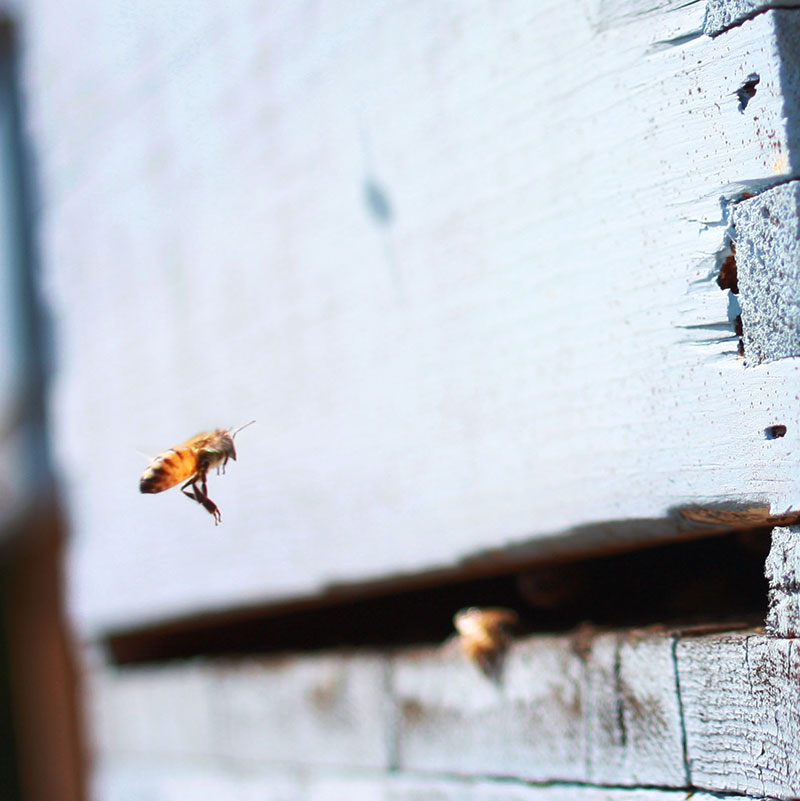
[mf_h2 align=”left” transform=”uppercase”]1. Assessing colony health based solely on the level of “bee traffic.”[/mf_h2]
I encourage beekeepers to observe their hives from the outside on a weekly or even daily basis so you can see if your bees are bringing pollen or even catch a pesky ant invasion. It’s also a good idea to make yourself familiar with what’s “normal” for your bees – in terms of traffic (the number of bees flying in and out of the hive), and also in terms of how many dead bees are near your hive. That way you can recognize any changes if and when they happen.
Despite these merits, observation from the outside is no substitute for actually opening up your hive and examining the combs within. Often if a problem is noticeable from the outside of the hive, it’s progressed too far to be remedied. Hive inspections, when done properly, will catch problems early and give you a chance to fix them before too much damage is done – and they’ll also give you a great opportunity to learn. For that reason, I recommend that new beekeepers inspect their hives once every two to four weeks, but no more often than that. The process of opening up your hive is stressful for bees and disturbs the carefully controlled atmospheric conditions within the hive, which is why many experienced beekeepers perform less frequent inspections on their older, more established colonies. To a new newbie, this might sound like a catch-22, but I firmly believe new beekeepers should inspect their hives regularly for learning purposes, and because it’s likely that their colonies are also new and less stable.
[mf_h2 align=”left” transform=”uppercase”]2. Not recognizing queenlessness.[/mf_h2]
A beehive can’t survive without its queen, but it’s a common misconception that colonies that have lost theirs will alter its behavior so dramatically that it’ll be obvious something’s wrong. You might observe plentiful bee traffic at the entrance and upon inspection, find lots of honey and bees inside. But if you observe more carefully, you’ll understand what really happens when your colony loses its queen. Gradually, your hive’s population will decline. The first sign will be a lack of eggs, then a lack of young larvae, and eventually your colony will have no brood at all. It might seem counterintuitive, but you will typically see an increase in honey and pollen because, without any larvae to care for, the bees focus entirely on foraging. If your colony is queenless for too long, they hit a point of no return.
So what should you really keep an eye out for? Eggs. Finding eggs in your hive means that your queen has been active at least three days ago – and that she’s laying, which is her one, all-important function. I check for eggs every single time I inspect a hive and encourage all of my students to do the same.
[mf_h2 align=”left” transform=”uppercase”]3. Leaving out frames or placing empty supers.[/mf_h2]
Bees will build comb in any empty space you give them. Beehive hardware is designed with this in mind – everything fits just so to keep bees building only in the spaces you want. Langstroth hives are built in two styles meant to hold either eight or 10 frames. If you put fewer frames in than the box is meant to hold, the bees will build rogue comb in the empty space. And if you add a super but don’t put in the frames, you’ll end up with a box of cross comb attached to the roof of your hive, which is a real mess to fix.
There are, of course, always exceptions to every rule: Some beekeepers may prefer to use one less frame in their boxes (nine instead of 10) to give themselves more room to work hives during inspections. As long as you space your frames evenly, this is fine. Also, one feeding technique involves adding an empty super and placing a feeder inside. If you do this, you should place an inner cover between the bees and this empty super with the feeder, and also take care to remove the super once you’re no longer feeding.
[mf_h2 align=”left” transform=”uppercase”]4. Harvesting honey too early or taking too much.[/mf_h2]
As general rule of thumb, don’t take honey from a colony in its first year. Often the bees aren’t strong enough yet to make an excess amount, and they need every drop they have to make it through winter. If your colony is strong and has plentiful stores, how much you can harvest varies greatly by geographical location. In Southern California, I like to leave my colonies with at least 40 pounds of honey (for reference, a single deep frame filled with honey can weigh 8 to 10 pounds). In cold climates, bees need around 100 pounds. It is devastating to lose a hive to starvation after a honey harvest, so be conservative. Seek advice from local beekeepers on how much honey should be left with the bees based on your region.
[mf_h2 align=”left” transform=”uppercase”]5. Not feeding new colonies. [/mf_h2]
I think some beekeepers feed their bees sugar water too readily and often to the detriment of their bees, which I talk more in depth here. But this is an exception: When you buy a package of bees in the spring, you must feed them. Package bees are confused, weak, and have no honey. It takes a least a month of consistent feeding to get them on their feet. If you fail to do this, you’ll likely lose the colony in the fall. Unless you are in a particularly nectar-rich area, you typically must feed nucleus colonies as well. In contrast to a package of bees (which is just a cluster of bees and a caged queen), a nucleus colony has 3 to 5 frames of comb, a laying queen, and usually some honey, too. If you’re hesitant to feed, let your nucleus sit for a week and then inspect to see if they’re building any new comb. If they aren’t, you need to feed them. And what about swarms? Feeding them isn’t always necessary, but if you notice your swarm isn’t growing in size, it’s a good idea to step in and feed them, too.
[mf_h2 align=”left” transform=”uppercase”]6. Placing your hive in a troublesome location. [/mf_h2]
When placing your hive, you want to find a level, clear space ideally in full sun. Make sure you have enough room to stand and work comfortably behind the hive or to the side of it; I suggest about a 10-foot radius of unfrequented space. I can’t tell you how many times I’ve gone to help a new beekeeper and found that they had placed their hive on an unstable slope or in the middle of some thorny rose bushes. Consider also where you face the entrance to the hive where there will be a high amount of bee activity for about five to 10 feet. You don’t want to face it at a neighbor’s pool or at your vegetable garden.
[mf_h2 align=”left” transform=”uppercase”]7. Not properly suiting up. [/mf_h2]
New beekeepers can tend to have a slightly idealized concept of what beekeeping will be like. You might see videos of experienced beekeepers inspecting their hives with no bee suit on and think you can do the same. Trust me, seasoned beekeepers get stung – but they know how to keep the bees calm and what to do if they act up. Or maybe you did one inspection during which the bees were calm, and you think you can get away with doing the next one unprotected. Not so; bee temperament is influenced by many factors – and even if you don’t have an allergy, too many stings can land you in the hospital. Always suit up, and double check your zippers and weak points before opening your hive. Ignoring this lesson could seriously jeopardize your health and may turn you off beekeeping prematurely. (This is especially true in Africanized bee zones, where Africanized honeybees have hybridized with wild honeybee populations. The wild bees in these areas are much more defensive than your average honeybee; they attack more swiftly with less provocation, send more bees, and chase their victims further.)
[mf_h2 align=”left” transform=”uppercase”]8. Not using your smoker. [/mf_h2]
Beekeepers use smoke to distract bees: It makes the bees think a wildfire is near and triggers them to gorge on honey so that if they need to evacuate, they won’t lose their entire honey stock. The smoke also blocks chemical signals the bees send to one another, which would help them organize a defense attack against you. To a new beekeeper, this can all sound pretty stressful, so you might opt to not use smoke at all. Not advised. If you don’t use your smoker, the bees will likely react defensively, sting your bee suit, and die. You may end up killing a large number of bees in this way, and you could also endanger your neighbors if the bees become especially agitated. (Neighbors who get stung tend not to be very understanding.)
[mf_h2 align=”left” transform=”uppercase”]9. Starting with just one colony.[/mf_h2]
I recommend that you start with at least two colonies, which doesn’t take that much more work and has several advantages. First, when you have two colonies, you learn more simply by comparing two hives side by side. But you can also test out specific theories. Maybe you want to try two different hives styles or two different breeds of bees, like the success of a nuclear versus a package.
Second, having two hives will give you management advantages. Maybe one colony is weak, while the other is strong. You could take some brood from the strong colony to help boost your weak colony. Or, you could lose a queen in one colony and they fail to make a new one. You can take eggs from your other colony to try and make your queenless colony queenright. Lastly, new beekeepers often lose their hives. Having two gives you a better chance of keeping one alive in your first year.
[mf_h2 align=”left” transform=”uppercase”]10. Being satisfied with a limited knowledge of beekeeping. [/mf_h2]
I have met many backyard beekeepers who seem content that they don’t understand what they’re looking at when they inspect their hives. They’re happy to leave the bees mostly alone and go in every once in awhile to take honey or to make sure there are still bees inside. Personally, this always shocks me. Learning about the bees is the best part of beekeeping! They are such fascinating creatures; the more I learn, the more I want to know. When you have a question, seek out an answer. If you see something inside your hive that you don’t understand, try taking a photo with your phone. You can use this later to help you identify what you have seen either by sharing it on a forum, with a mentor or researching yourself. There are so many resources available: classes, mentors, books, documentaries, forums, blogs, videos! Find what works for you and never stop learning.
A version of this article originally appeared on Girl Next Door Honey’s blog, beekeepinglikeagirl.com.
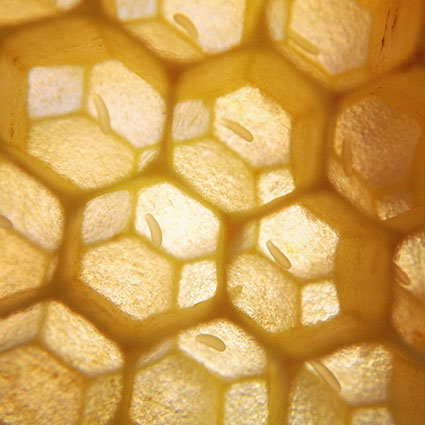
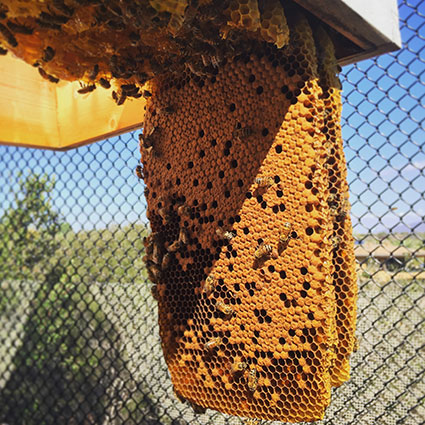
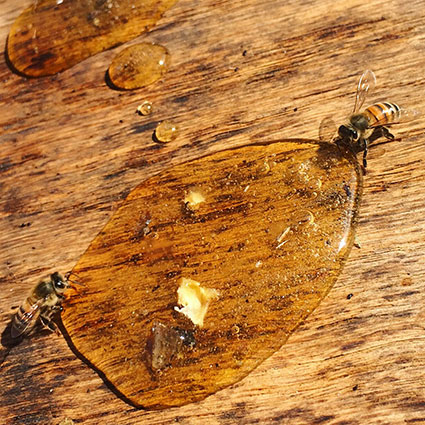
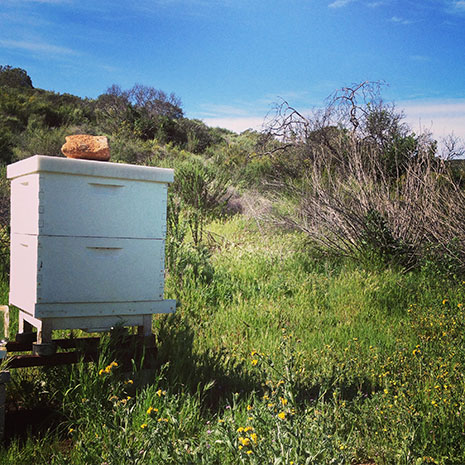
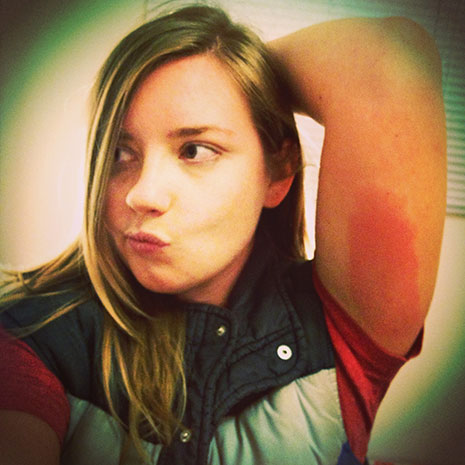
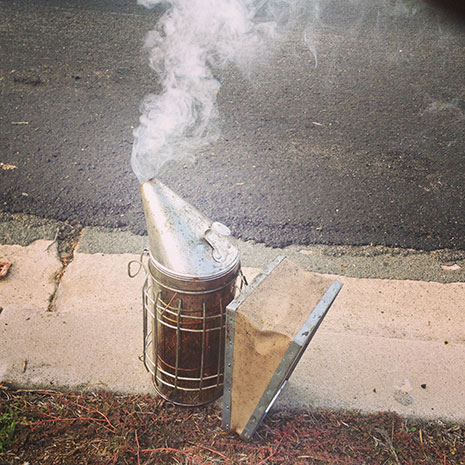
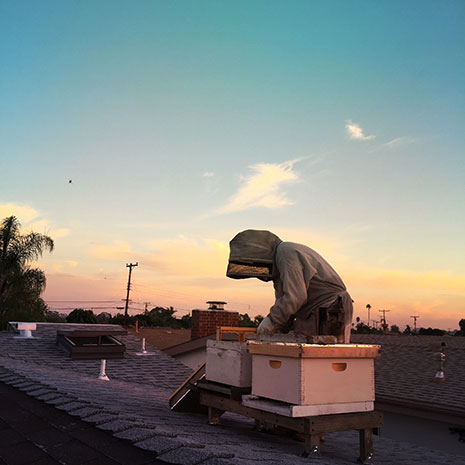
Thanks for your ideas I am new to this hobby this year and am very lucky to be in Spokane Wash. there is a great beekeepers club with mentors and five days of instruction spaced through the year. On april 13th we will be installing bees in the clubs hives and then getting ours to take home and install in our hives. they say kill our bee’s and go home and do it right with yours looking forward to the adventure. My grandkids are painting the hives for me these bee’s will have a memorable home
H – E – L – P P – L – E – A – S – E Hello, what a great article. I have just started bee keeping. Have the smoker, tools and safety equipment etc. The Bee package was released into the Hive on Monday 23rd March 2020. 2 days ago I noticed something on the bottom tray (larvae? and hive beetles). Have addressed by putting veg oil on bottom tray and have caught / reduced no’s of beetles on checking this morning. Hoping not to get SLIME OUT. Picking up a Beetle Trap today. ALSO, I DID… Read more »
I’m brand new to bee keeping so this article was very helpful. I’m concerned because after one week it seems my bees haven’t started to draw out any of the new frames yet. I started with a 5 frame nuc (times 2)
Anyway thanks again.
Collected a swarm last week and waited a week before going into the hive. When I went in this morning,m all bees were in the honey super and none were in the deep body. What’s going on in this hive?
How would I get started?
How/where would I buy bees?
I know absolutely nothing about bee keeping, I simply stumbled across an article about bees while searching for information about a book on the psychology of human behavior.
Thanks for your help
I moved house and found a beehive in the back yard unknowingly lifted the lid and now there’s some angry bees out there I would like to get the lid back on before night any tip’s i don’t have a smoker or suit and I don’t want to damage the hive any more as they have built up the comb on the lid that I broke off.
Is 10 am to laye for my bees to get their first direct morning sun
I enjoy the info and it is straight forward. thanks Jean
My new hive fits 9 frames snugly – I know brood boxes are supposed to be 8 or 10 frames. Should I leave all 9 frames in or leave even spaces with only 8 frames?
Should there be pollen in my deep brood frames?